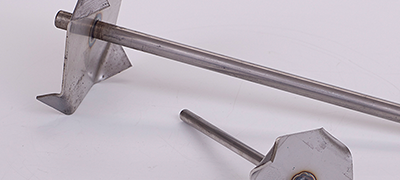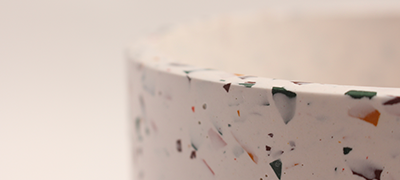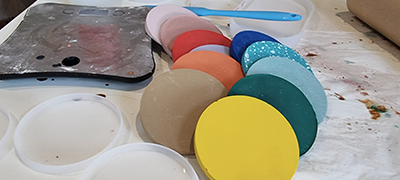Sanding is like Marmite.
Some people love it and some people hate it but if you want to finish your creations to the highest standard, it’s likely that some level of sanding will be needed. If you’ve made a terrazzo piece, sanding is where the magic happens and if you’ve made a piece without terrazzo, you might just need to even off the bottoms and edges of your creation.
There are loads of different sanding grits and it can be difficult to know where to start. The key thing to remember is the lower the grit, the coarser the sandpaper. Lower grit sandpapers will make for faster sanding, however they will create deeper scratches on your creation. These can then be buffed out by using a higher grit sandpaper which will feel more smooth to touch. Always start low and work up to high when it comes to sandpaper grit.
There’s no right or wrong when it comes to the exact grits to use as long as you’re going from low to high. It’s very much personal preference but to get you started, we’ve compiled a beginner’s guide to sanding below. Start here, and as your progress you might want to tweak as you feel necessary.
WHAT YOU NEED
– Something to cover your work surfaces
– 1 x bowl of water ( premium mixing bucket is ideal )
– Sandpaper in 120, 240 and 2000 grit ( buy here)
– Sanding block -optional but makes sanding flat edges much easier. ( buy here)
– Your complete Jesmonite piece
LET’S BREAK IT DOWN
1. Start by covering your work surface so you don’t get splashes of wet Jesmonite on your furniture. Believe it or not, sanding can be a messy job!
2. To sand Jesmonite, we’re going to wet sand, which will help to reduce scratches on your piece and reduce dust. Start with your lowest grit sandpaper, which in this case will be your 80 grit, and dip the sandpaper in your bowl of water.
3. Now it’s time to sand. Move your creation over your sandpaper in circular motions, applying pressure as you do so. This will help you to create an even surface. Keep sanding with your 120
grit until you can clearly see your terrazzo pieces or until your surface is even. You’ll notice that you get a lot of wet Jesmonite in your sandpaper, so keep rinsing it in your bowl of water
as you go to avoid it getting clogged.
Pro Tip: If you’re sanding a flat surface, try using a sanding block or use water to stick a sheet of sandpaper to your surface so you can apply more pressure when you sand.
4. Next move onto your 240 grit, repeating the same process, sanding in circular motions. At this point you’re looking to significantly reduce the amount of scratches in your piece. When your
scratches have been reduced, it’s time to move onto your final grit.


